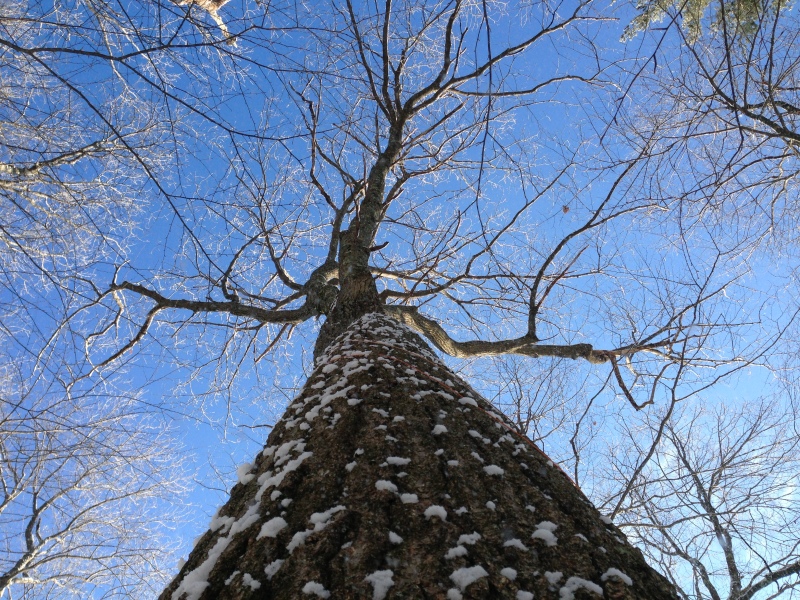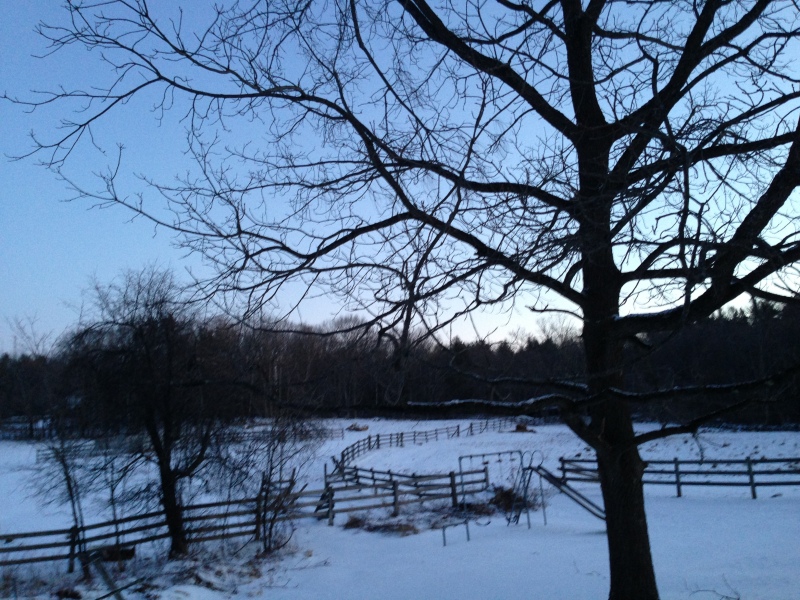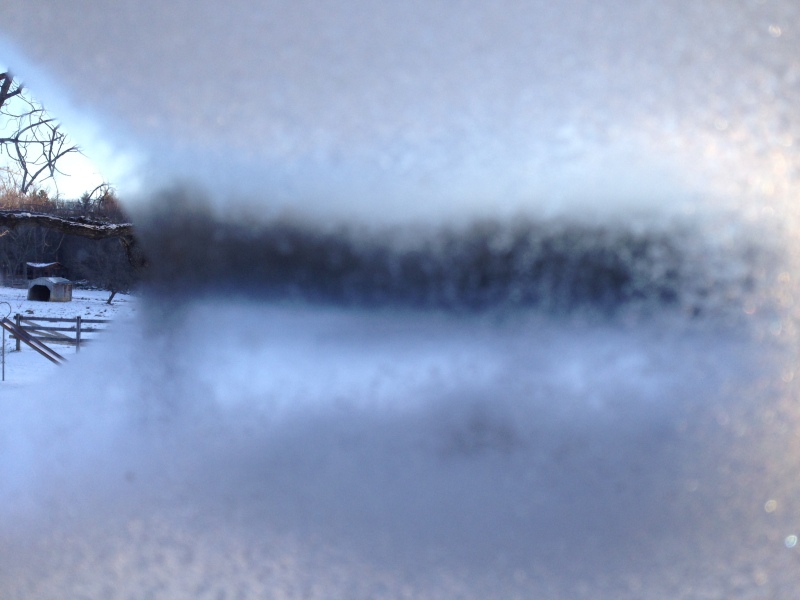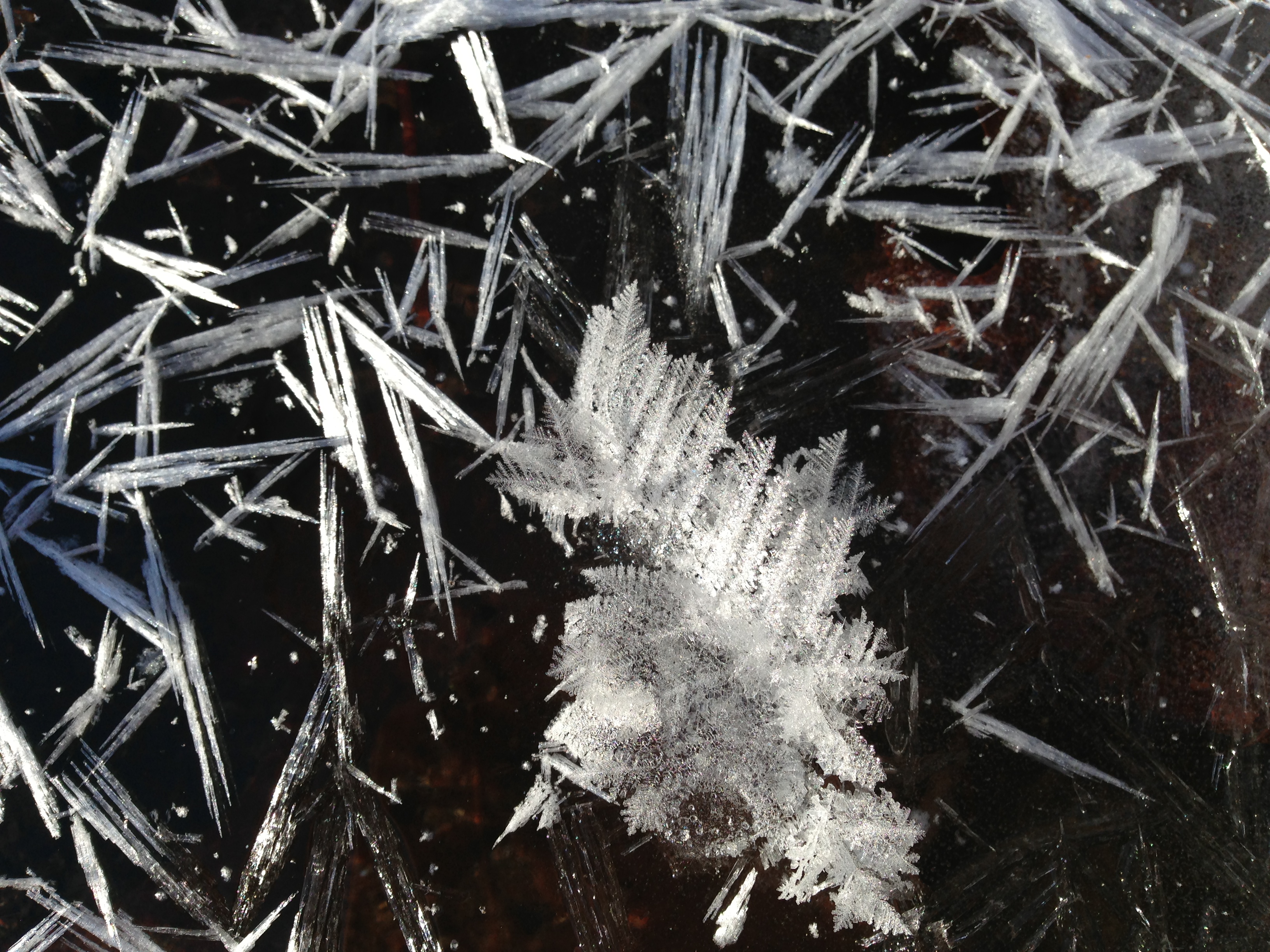IN THE PALACE OF WINTER
The snow is blue-white, and the sky a long, clear view into infinity as I wait for morning’s full light. The black walnut tree outside my kitchen window stands in spidery silhouette, its symmetry a fugue of refrain and repeat.
To the west, the board fence stitches the white snow of the pasture at the Harvard Forest, empty now. We gathered the last of the cows yesterday in a rumpus of a wrangle, five men, two packs of hamburger rolls — and me, singing “Deario, Cheerio,” to the two stragglers left of the herd. We all decided that my afternoon treats for the cows of English muffins and molasses made them reluctant to leave. But at last, they loaded into the livestock trailer, just in time, too, before the coldest night yet of the winter set in.
This morning the iPhone reported -8 when I awoke, and the kitchen was 58 degrees. I cranked up the oven to bake some muffins, and settled by the window to wait for sunrise. The night’s moon, mostly full, still sailed in the east, but the brightening rim of the bowl of the sky was feathered with the tips of the trees. Each branch and twiglet showed in sharp definition and the brushwork of the white pine was delicately etched against the sky.
I looked to the upper pasture, where the sun always comes first, but no, not yet. The gold that spills from the top of the hill on down was still hoarded in the night.
On the porch, the windows were too thick with ice and frost to see out, but for a few melted peepholes to the pasture and woods. The scent of paper whites and white jasmine I keep out there for the coolness was thick and sweet.
I thought of Sarah Luce Mann, the housewife whose diary from 1861, kept in the Harvard Forest Archives, I am reading. Living a stone’s throw from me 154 years ago, did she relish this secret, quiet, waiting-for-the light-time, looking at these same views of pastures and woods? Or was she already at work? Probably: in her diary, every minute of her life is a verb. Washed, scrubbed, churned, knitted, mopped, ironed, sewed, carried. And her all-purpose verb, “chored”, as in, “I chored all morning. ” Making soap, making candles, upholstering chairs, mending. The mother of six, only three of whom lived, she uses the word weary a lot in her daily accounts. It is often underlined.
I’m reading her diary to better understand what life was like for people who lived here when these woods were pastures and farms. I want to pull back the wool of abstraction from the history of this landscape. Her diary puts new focus, too, on the intimate connection to nature that was her daily life. Life amid nature was not for her the walk in the woods I enjoy. It was a horrendous, unrelenting amount of work, wresting a living from the land in the era of horsepower and firewood.
By 7 AM the pasture and cowshed, apple tree and stonewall are awash in the even, first light of the day, a light without shadows, all promise and possibility. The stars are snuffed out, and soft pink light glows right at the tree line, while a blue grey shadow hangs lower, amid the trees’ trunks.
At 7:20, the sun touches the trees at the top of the pasture with a ruddy glow. The first beams glitter on the snow out my kitchen window as I put the muffins in to bake. Colors spangle the dry, fluffy snowflakes as they catch the low light: red, blue, green, orange. The wrinkled visage of the walnut shows now as the light penetrates the texture of its bark.
Sun gleams on the metal of the instrument tower poking up from the forest to the north. How funny that when I first arrived last August I was annoyed, thinking it was a cell tower invading my view. Only to learn it was the Barn Tower, instrumented with the devices we use here at the Harvard forest to track the seasonal progression and physiology of the trees – information at the core of my work tracking the life history of a 100-year old tree.
Two muffins down, and I was out the door into the majesty of a cold so deep it makes its own rules. I’ve not been often in weather that could kill, but who could resist enjoying the woods amid the sound and sparkle of a minus something degree morning, with a bluebird sky and radiant sun. I went to see my tree first.

The big oak waits out the winter cold, deep in dormancy. Sugars it stored last fall from its summer’s work of photosynthesis keep its living tissues from freezing now in winter.
This big oak I am exploring this year was stoic and still. There is something new here every day, and today, it is was a sound: the crack of trees, bearing the cold. In the quiet, a report sharp as a handclap told of the weather.
Trees are engineered to endure the cold. They recall sugars from their leaves in autumn before the leaves fall that work like antifreeze in winter. Glucose in the solute sustaining trees’ living cells keeps the water from forming ice crystals, even though the temperature is below zero.
Michele Holbrook, Professor of Biology and Charles Bullard Professor of Forestry at Harvard University explains the danger to trees isn’t a cold, dry, sunny day like this. It’s the ice storms that ravage trees. “An ice storm adds a lot of weight to the tree, and then you get some wind. Then you get a lot of damage,” Holbrook notes.
Ice is a vector of new life in New England forests. In an ice storm, trees topple and shed shattered branches, opening the land to light, and the trees waiting their chance to surge from the suppression of shade into their release at last, to openings in the canopy.
Winter is a force, no question: already, all around its base are the branches my tree has been shedding this winter, pruned by the wind. On a calm, cold day like this though, mostly, my tree is a silent sentinel, deep in dormancy, barely respiring, just waiting winter out.
I walked on, following an old wagon road through the woods, lined on both sides by streams. Frost flowers bloomed on the black, virgin ice formed just overnight, still so clear I could see the flow of the cold water underneath.
Yet even in the deep freeze of a day like today, everywhere there were signs of life. Moss on a rock poked up fresh and green through the snow. And amid the blue shadows of the trees on the snow was the tracery of animal tracks: squirrels, chipmunks, rabbits, and birds.
I arrived at the vernal pool at Hemlock Hollow, to find a smooth disc of snow on its frozen ice. It was hard to imagine that in just a few months its melted edges will draw wood frogs, whose quacking call will be a first sign of spring. But for now, winter reigns supreme in these woods, in a white palace of ice, frost and cold.




Leave a Reply